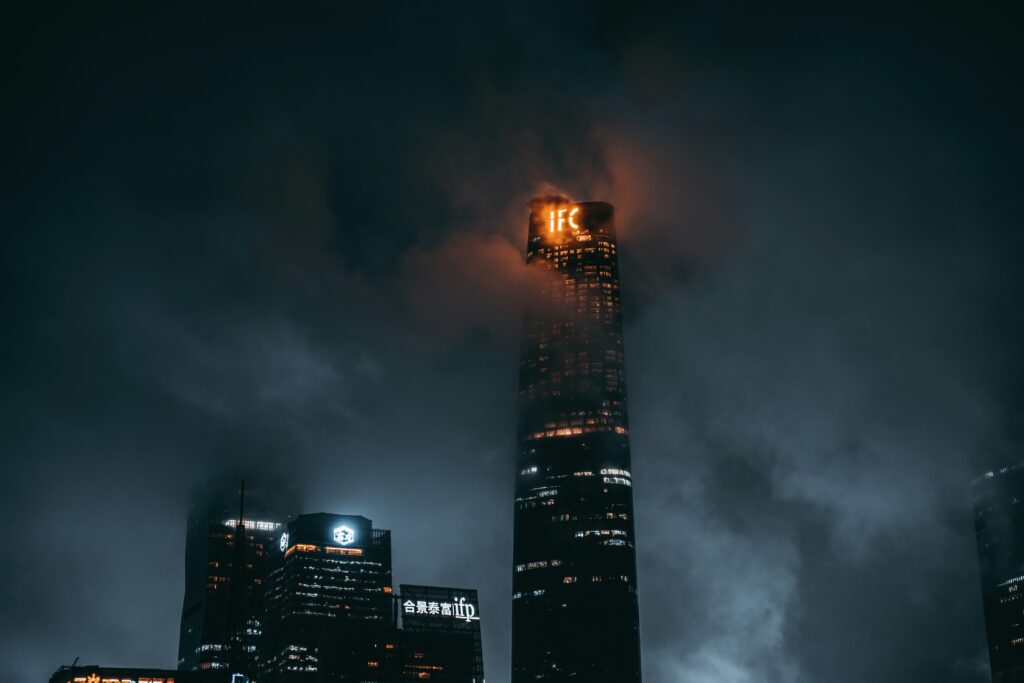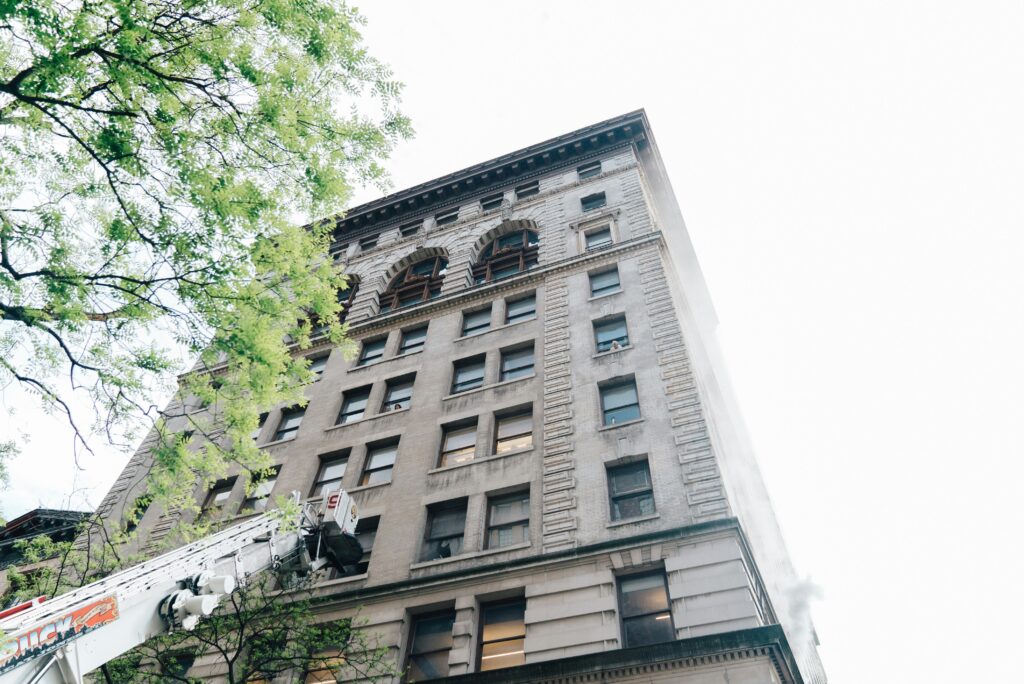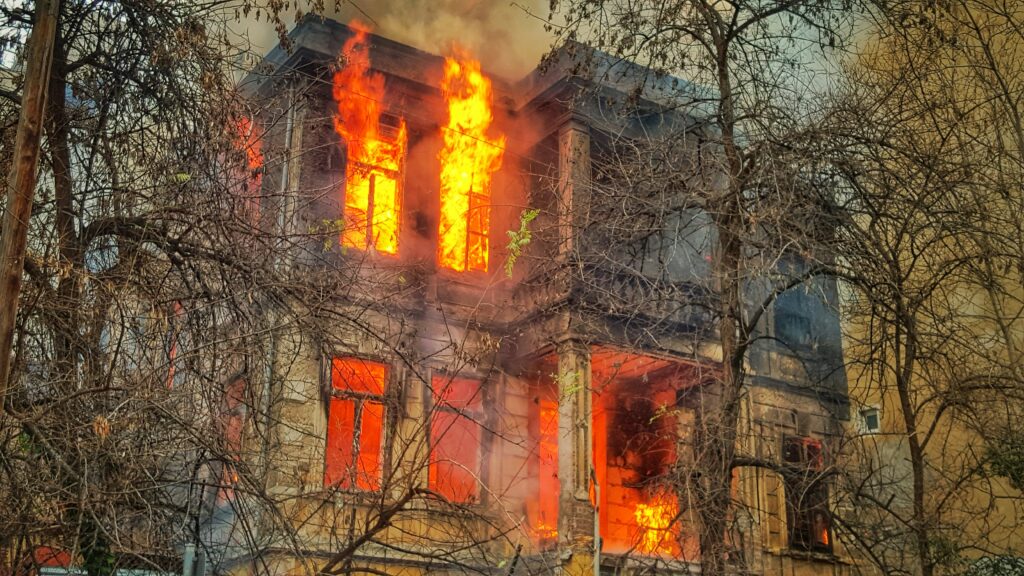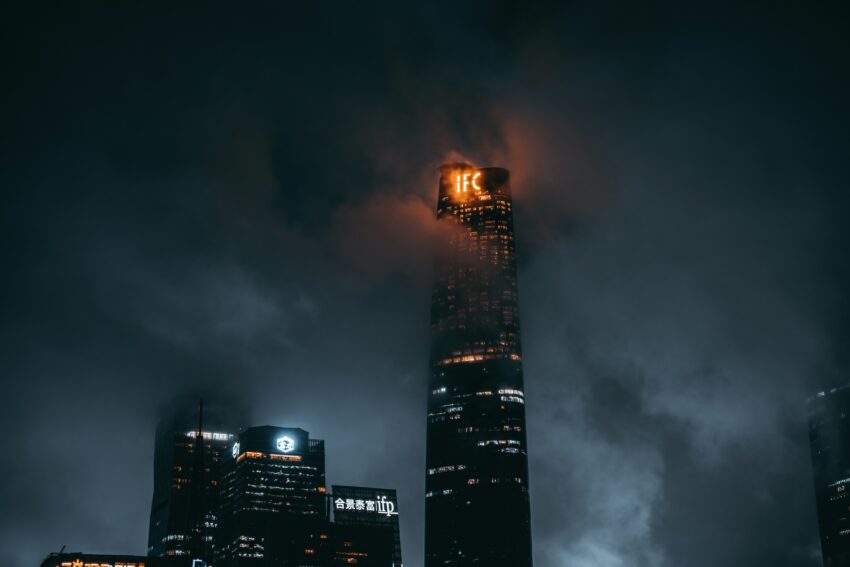
Your lease agreement won’t save you when the elevators fail during a fire. The 2017 Grenfell Tower disaster in London proved modern buildings burn faster than medieval villages. That cute studio with exposed brick? It’s a death trap waiting for its moment. Let’s fix that.
why apartments will kill you faster than suburbs
High-rises fail in ways houses don’t. During the 1995 Chicago heatwave, upper-floor apartments became ovens while basements flooded. The 2003 NYC blackout showed how quickly stairwells jam with panicked neighbors. Your building’s fire suppression system? Useless when the water pressure fails above the fifth floor.
Three truths urban preppers ignore:
1) Landlords prioritize liability over survival
2) Shared walls mean shared threats
3) Vertical escape routes become death funnels
The rich die first in skyscrapers. Their concierge won’t carry water up forty flights when the pumps fail.

the 72-hour lockdown blueprint that actually works
Manhattanites who survived Superstorm Sandy longest followed one rule: prepare to be trapped, not rescued. Store water in collapsible space bags under beds—they hold 5 gallons but flatten to 2 inches when empty. Use Mylar blankets as blackout curtains that also reflect body heat.
Sanitation gets ugly fast. Line your bathtub with contractor bags before filling it. When toilets back up, a five-gallon bucket lined with kitty litter beats cholera. Add coffee grounds to mask the smell from nosy neighbors.
Light without power demands creativity. Those LED tea lights from the dollar store last 200 hours. Duct-tape them inside frosted plastic bottles for ambient lighting that won’t draw attention.
fortifying your rental without getting evicted
Miami residents learned during Hurricane Andrew that standard door locks might as well be tissue paper. Replace the strike plate screws with 3-inch versions—it takes ten minutes and looks identical to maintenance crews. For windows, apply clear security film that lets light through but holds glass together during explosions.
Soundproofing serves double duty. Acoustic panels lined with fire-retardant material dampen noise while slowing fire spread. Bookcases placed strategically create choke points against intruders. That ugly area rug? It hides floor anchors for emergency shelter rigging.
hiding supplies in plain sight
LA preppers use HVAC vent covers with magnetic backs to create undetectable storage. Hollow out a thrift-store dictionary to hide documents. Store water purification tablets inside curtain rods. The best spots? Where maintenance workers look every day but never see—like behind the refrigerator’s kickplate or inside the dishwasher’s false panel.
Weight distribution matters. That “moldy cardboard box” of “old textbooks” in your closet? Perfect for storing 30 pounds of rice if you reinforce the bottom with plywood cut to size. Just remember—looters check freezers first and bookcases last.
when utilities turn against you
Houston apartments during the 2021 freeze proved conventional wisdom wrong. Toilet tanks held drinkable water while pipes burst in walls. Smart survivors drained their water heaters before the pressure dropped.
For power, a Jackery 500 can run a medical device for eight hours. Better yet, steal your building’s emergency stairwell lights—they’re required to have battery backups. Heating comes from people, not space heaters. Crowd into one room with blankets hung over the doorway. Your body heat will keep the space above freezing.
the urban threat matrix
San Francisco earthquakes taught us to secure tall furniture with earthquake putty—it looks like museum wax but holds bookshelves during 7.0 tremors. Phoenix heatwaves demand swamp coolers made from battery-operated fans and wet towels. Boston blizzards? Your balcony becomes a freezer for perishables when the power fails.
The real threat isn’t the disaster—it’s your neighbors. During the 2003 blackout, NYC apartment dwellers formed block watches within hours. The unprepared became targets by nightfall.

the psychology of vertical survival
Toronto condo residents developed light-based communication systems during the 2003 blackout—three flashes means “help needed,” two means “all clear.” Isolation kills faster than thirst in high-rises. Create a “gardening club” to identify allies before the crisis hits.
Stress manifests differently in apartments. That “annoying neighbor” knocking daily? They’re taking census of who has supplies. Install a peephole camera disguised as a door decoration. Knowledge is survival.
pet prep for the inevitable
Seattle high-rise cats learned to use human toilets during extended lockdowns. Dogs? Train them to wear backpacks carrying their own food. Store pet meds in empty tampon boxes—nobody steals those.
The ugly truth: fish and reptiles rarely survive extended disasters. Have clove oil on hand for humane euthanasia. For dogs, create “service animal” vests from old hoodies. Landlords can’t evict certified support animals in most cities.
budget vs premium: where to splurge
Parisian preppers proved €10 door bars outperform €300 security systems during riots. But that €200 water filter? Worth it when cholera hits. The breakdown:
– Splurge on water purification and medical supplies
– Save on security by using architectural weaknesses
– Never cheap out on lighting—LED beats candles every time
manipulating building management
NYC supers respond to “care packages” of whiskey and cigars. Chicago maintenance crews ignore subtle modifications if you report “existing damage” first. Always frame changes as “temporary decorations” rather than permanent alterations.
The legal tightrope:
– Fire code violations get you evicted
– ADA loopholes allow “necessary modifications”
– Religious exemptions cover surprising items
Know your lease’s fine print. Most forbid water storage but say nothing about “decorative fountain collections.”
legal gray areas worth exploiting
Austin lets you carry any knife under 5.5 inches. Denver considers “sporting goods” exempt from weapon bans. NYC bans pepper spray but ignores wasp deterrents.
Document everything. A “medical necessity letter” from an online clinic can justify oxygen tanks, extra water storage, or reinforced doors. Notarized “religious practice” statements protect unusual food stockpiles.
the only checklist that matters
Phase one starts tonight:
1) Fill every container with water, including your washing machine
2) Replace those door screws
3) Identify two escape routes that avoid main corridors
Phase two begins tomorrow:
1) Map all utility access points in your building
2) Identify three neighbors who might become allies
3) Create “decoy” valuables for looters to find
Phase three never ends:
1) Rotate supplies every time you pay rent
2) Practice blackout drills monthly
3) Update legal protections annually
Your apartment is either your greatest asset or your coffin. The difference comes down to what you do in the next 48 hours—not when the sirens start wailing. That knocking sound? Could be the super. Could be hungry neighbors. Best to be ready for both.
Act now:
1) Inventory every liquid in your apartment (yes, even the cleaning supplies)
2) Test your front door’s resistance to a shoulder ram
3) Identify which window opens farthest without attracting attention
Tomorrow’s planning is yesterday’s regret. The city won’t wait for you to catch up.
